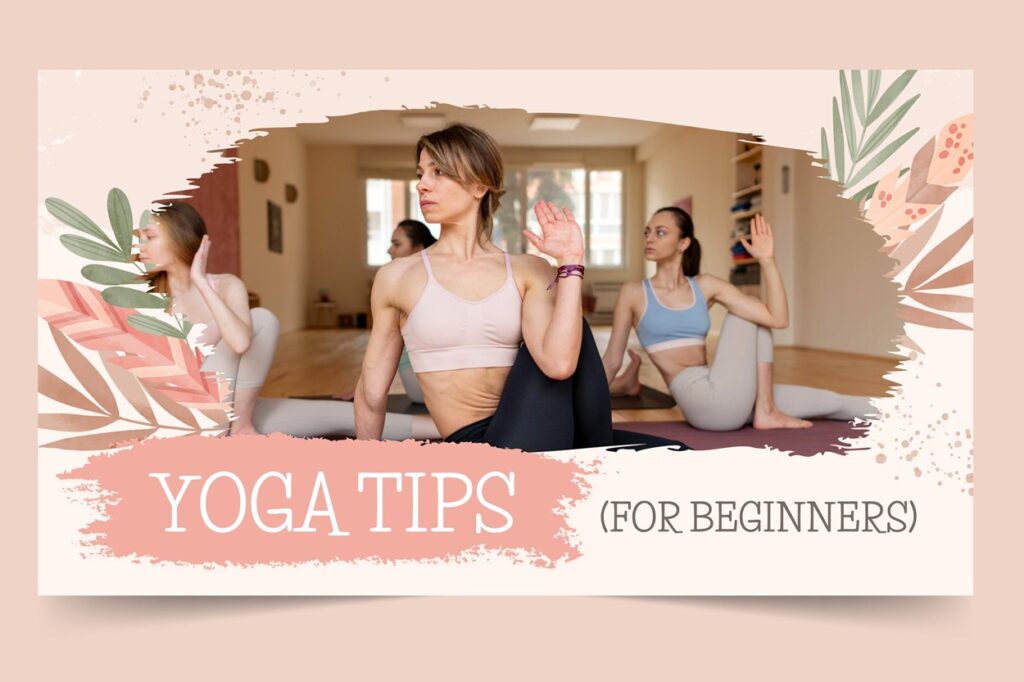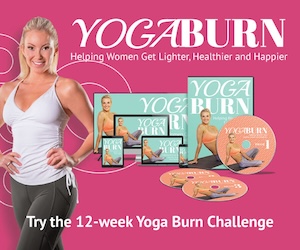Yoga Beginners Course
Starting a yoga beginners course is an exciting step towards improving your overall well-being. Whether you’re seeking relaxation, flexibility, strength, or stress relief, yoga offers a path to holistic wellness. In this guide, we’ll explore what to expect from a yoga beginners course, provide essential tips for newcomers, and empower you to make the most of your journey into the world of yoga.

What to Expect from a Yoga Beginners Course:
1. Foundations of Yoga Poses:
- Mountain Pose (Tadasana):
- This foundational pose is often the starting point for many yoga practices. In Mountain Pose, you stand tall with your feet together or hip-width apart, grounding through the soles of your feet. The key is to find a strong and balanced alignment. Imagine a string pulling you upward from the crown of your head while engaging your core and lifting your chest. This pose helps you establish proper posture, body awareness, and balance, setting the stage for more complex poses.
- Child’s Pose (Balasana):
- Child’s Pose is a gentle resting pose frequently used for relaxation and centering during yoga practice. To get into this pose, you kneel on the mat with your big toes touching and knees apart. Sit back on your heels, then extend your arms forward with your palms resting on the mat. Your forehead touches the ground, and you relax your entire body. Child’s Pose gently stretches the spine, releases tension in the lower back, and opens the hips. It’s a go-to pose for moments of rest and introspection during your practice.
- Downward-Facing Dog (Adho Mukha Svanasana):
- Downward-Facing Dog is one of the most recognized yoga poses. In this pose, you create an inverted “V” shape with your body. Place your hands shoulder-width apart at the front of your mat, tuck your toes under, and lift your hips toward the ceiling. Your feet should be hip-width apart. The goal is to lengthen your spine, straighten your legs (or keep a slight bend if needed), and press your heels toward the floor. Downward-Facing Dog strengthens the arms and legs, stretches the spine, and promotes overall flexibility. It’s often used as a transitional pose and as a foundational element in various yoga sequences.
2. Breath Awareness:
- Diaphragmatic Breathing:
- Diaphragmatic breathing, also known as belly breathing, involves deepening your breath by expanding your diaphragm. To practice diaphragmatic breathing, place one hand on your chest and the other on your abdomen. Inhale deeply through your nose, allowing your abdomen to rise as your diaphragm expands. Exhale fully through your mouth, feeling your abdomen fall. This technique enhances oxygen intake, reduces stress, and encourages relaxation.
- Ujjayi Breath (Oceanic Breath):
- Ujjayi breath is characterized by a gentle constriction at the back of the throat, creating a soft, oceanic sound during both inhalation and exhalation. To practice Ujjayi breath, inhale deeply through your nose, slightly constricting the back of your throat to create the sound. Exhale slowly through your nose, maintaining the constriction. Ujjayi breath regulates the flow of breath, aids concentration, and promotes a meditative and calming effect, especially during dynamic movements in yoga.
- Deep Belly Breathing:
- Deep belly breathing involves directing your breath deep into your lower abdomen, expanding the diaphragm and ribcage. To practice deep belly breathing, place one hand on your chest and the other on your abdomen. Inhale deeply through your nose, allowing your abdomen to rise as you fill your lungs. Exhale fully through your nose, feeling your abdomen fall. Deep belly breathing enhances oxygen exchange, increases relaxation, and improves focus. It’s often used during relaxation and meditation exercises to deepen your connection with your breath.
Related Article: What is the Meaning of Pranayama: Pranayama Breathing Techniques & Tips
3. Mindfulness and Meditation:
- Mindfulness:
- Mindfulness is the practice of being fully present in the moment, observing your thoughts, sensations, and surroundings without judgment. It involves cultivating awareness of your present experience. During yoga, you’ll engage in mindful breathing exercises, where you focus your attention on the sensation of your breath as it enters and leaves your body. Body scans encourage you to systematically scan your body, releasing tension and promoting relaxation. These practices help you connect with your body, enhance self-awareness, and cultivate a deeper sense of presence both on and off the mat.
- Guided Meditation:
- Guided meditation sessions in a yoga beginners course introduce you to various meditation styles and themes. For example, loving-kindness meditation involves sending well-wishes and positive intentions to yourself and others, fostering empathy and compassion. Body scan meditation guides you through a mental exploration of your body, releasing tension and promoting relaxation. These sessions provide a structured and supportive environment for developing mental clarity, reducing stress, and fostering emotional balance. Meditation becomes a valuable tool for enhancing your focus, managing stress, and nurturing inner peace in your daily life.
4. Gentle Progression:
- Progressive Poses:
- As you progress in your yoga beginners course, you’ll gradually explore more complex poses. For example, as you become more comfortable with foundational poses like Downward-Facing Dog, your instructor may introduce you to Plank Pose (Phalakasana) or Upward-Facing Dog (Urdhva Mukha Svanasana). These poses build on the strength and flexibility you’ve developed and encourage you to expand your practice. Each pose is introduced with clear instructions on alignment, modifications, and safety, ensuring you build confidence as you advance.
- Use of Props:
- Props like blocks and straps play a vital role in supporting your practice. Blocks can be placed under your hands or feet to assist with balance or to provide height in poses when reaching the floor is challenging. Straps help you extend your reach in stretches and achieve proper alignment in poses where flexibility is developing. Props enhance accessibility and comfort in your practice, making poses more accessible and adaptable to your unique needs and abilities.
Related Article: Stand Tall: Yoga Poses for Perfect Posture
5. Relaxation and Savasana:
- Savasana (Corpse Pose):
- Savasana is the final relaxation pose in yoga. It’s a profound practice of surrender and integration. In Savasana, you lie on your back with your arms and legs comfortably extended, palms facing up, and eyes closed. This pose allows you to let go of physical and mental tension, promoting deep relaxation and inner peace. It’s a time to absorb the positive energy generated during your practice and reconnect with yourself on a profound level. Savasana is a reminder of the balance and harmony that yoga can bring to your life, leaving you feeling refreshed and centered as you conclude your practice.
Why YogaBurn is a Great Start-Up Program for Beginners:
- Structured Progression: YogaBurn offers a well-structured and beginner-friendly program. It’s divided into phases, starting with foundational poses and gradually advancing as you gain confidence and flexibility. This progressive approach ensures that beginners can comfortably ease into yoga practice without feeling overwhelmed.
- Clear Instructions: Zoe Bray-Cotton, the creator of YogaBurn, provides clear and detailed instructions in her video sessions. She breaks down each pose step by step, making it easy for beginners to understand and follow along. Zoe’s teaching style is accessible and supportive, ensuring that newcomers feel comfortable from the start.
- Customization: One of the standout features of YogaBurn is its flexibility to accommodate different fitness levels. As a beginner, you can choose the program that aligns with your specific goals, whether it’s weight loss, flexibility, or overall fitness. This customization allows you to tailor your practice to your individual needs.
- Time-Efficient Workouts: Many beginners have busy schedules, and finding time for exercise can be a challenge. YogaBurn’s workouts are designed to be time-efficient, with sessions ranging from 15 to 45 minutes. This makes it manageable to incorporate yoga into your daily routine, even if you have limited time.
- Home-Based Practice: YogaBurn can be done in the comfort of your own home, which is especially convenient for beginners. You don’t need to worry about commuting to a yoga studio or gym. All you need is a yoga mat and a device to stream the video sessions.
- Variety and Engagement: The program offers a variety of yoga styles and workouts, ensuring that beginners won’t get bored with their practice. You can explore different sequences and styles, keeping your practice engaging and enjoyable.
- Mind-Body Connection: YogaBurn places a strong emphasis on the mind-body connection, which is particularly beneficial for beginners. You’ll not only work on physical fitness but also develop mental clarity and stress reduction techniques. This holistic approach enhances overall well-being.
- Community Support: Many beginners find motivation and support by connecting with other YogaBurn users through online communities and forums. Sharing your journey, asking questions, and celebrating achievements with like-minded individuals can enhance your experience and keep you motivated.
Final Thoughts
These elaborations provide a comprehensive understanding of the foundational poses, breath awareness techniques, mindfulness, and progression you’ll experience in a yoga beginners course. It’s a journey of self-discovery, growth, and holistic well-being, guided by experienced instructors who ensure a safe and supportive environment for your practice.




